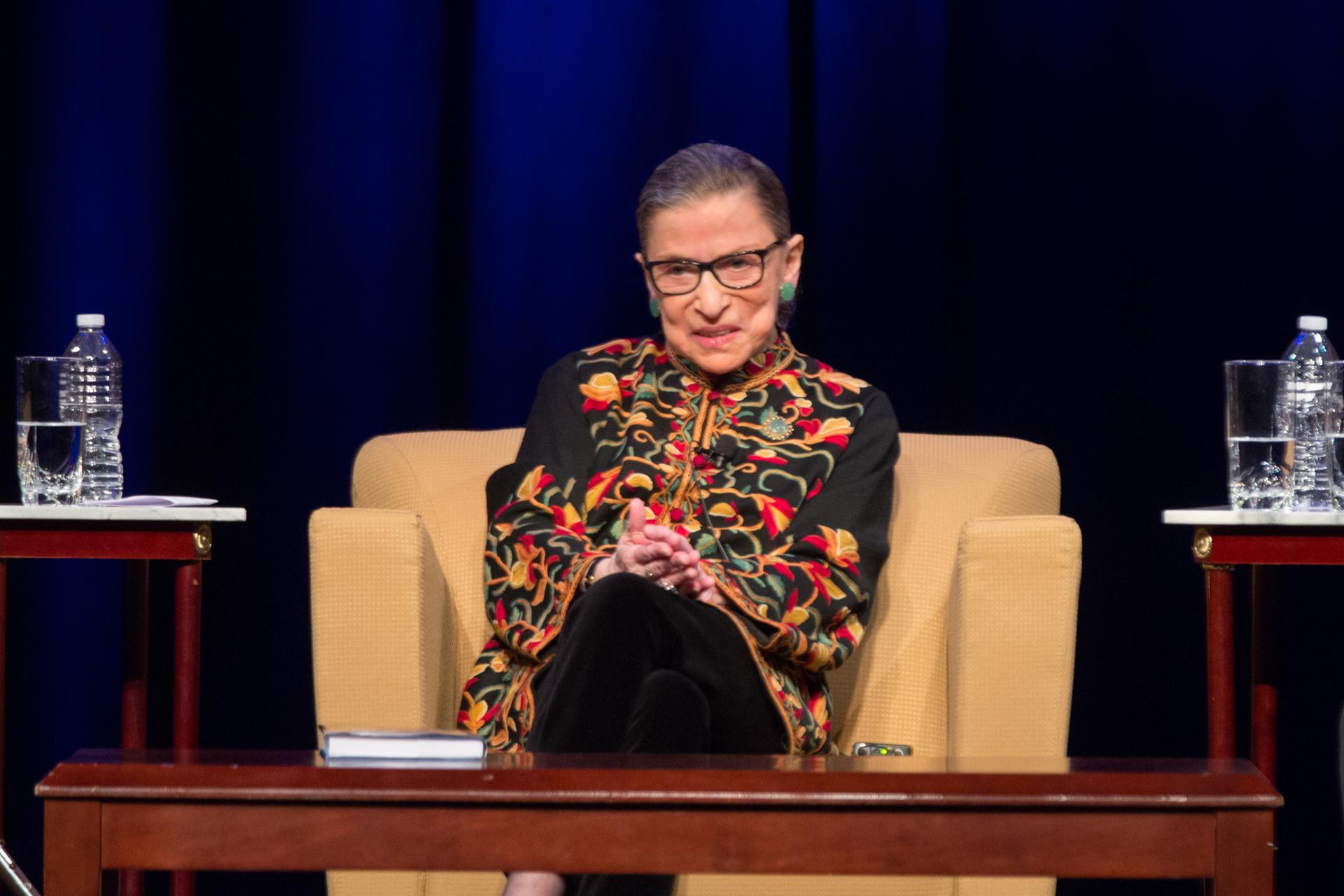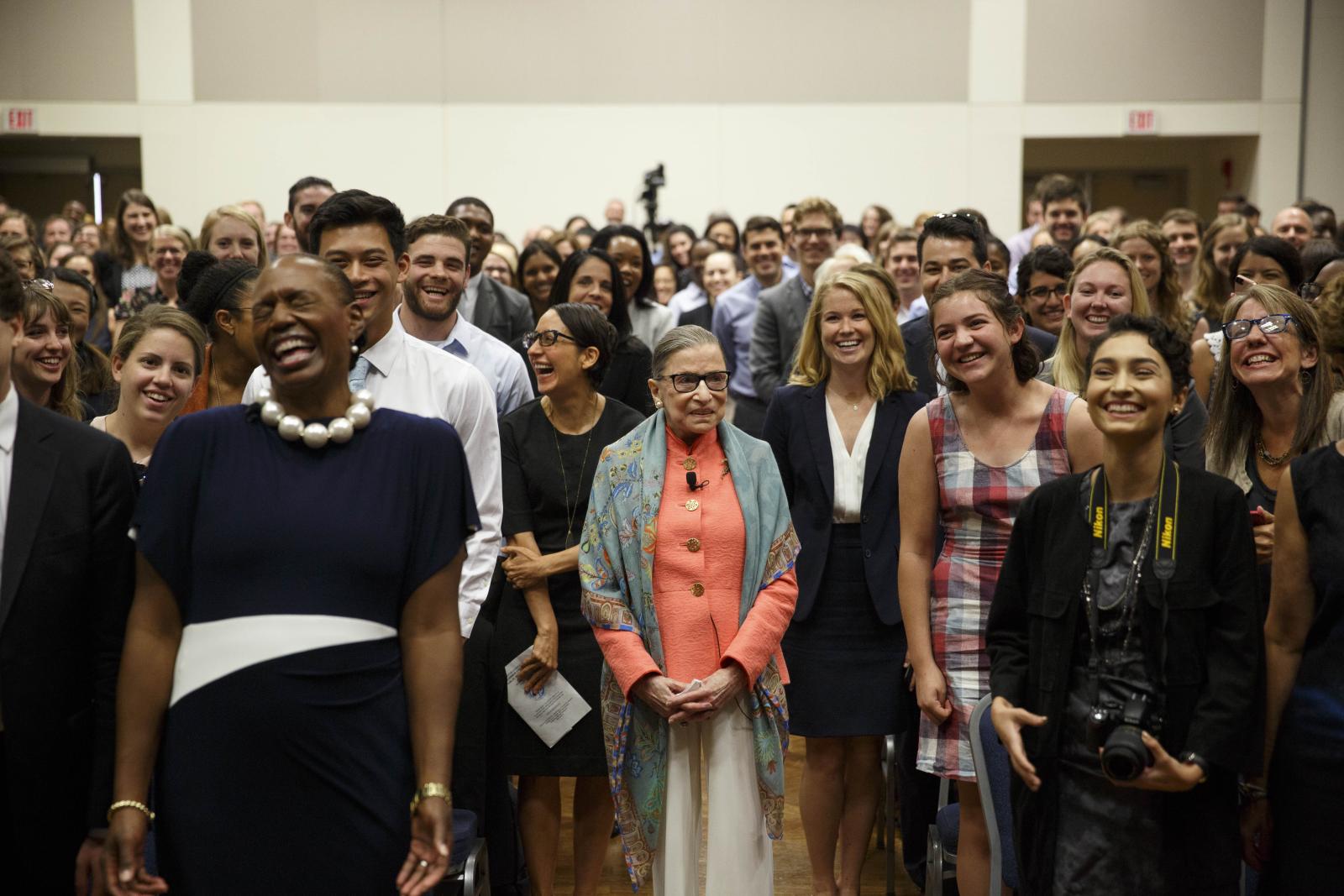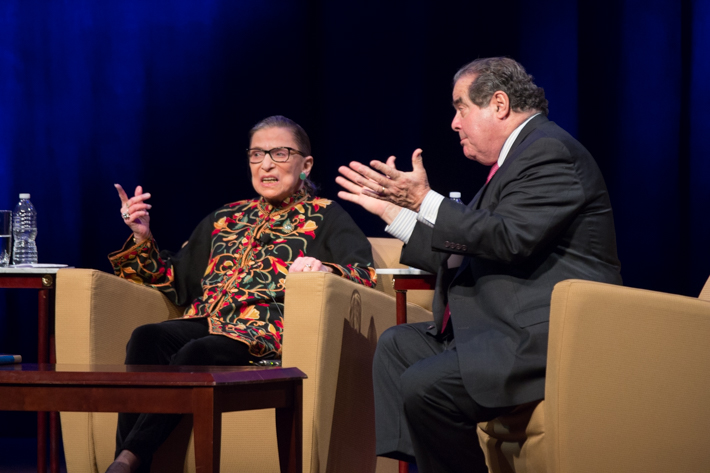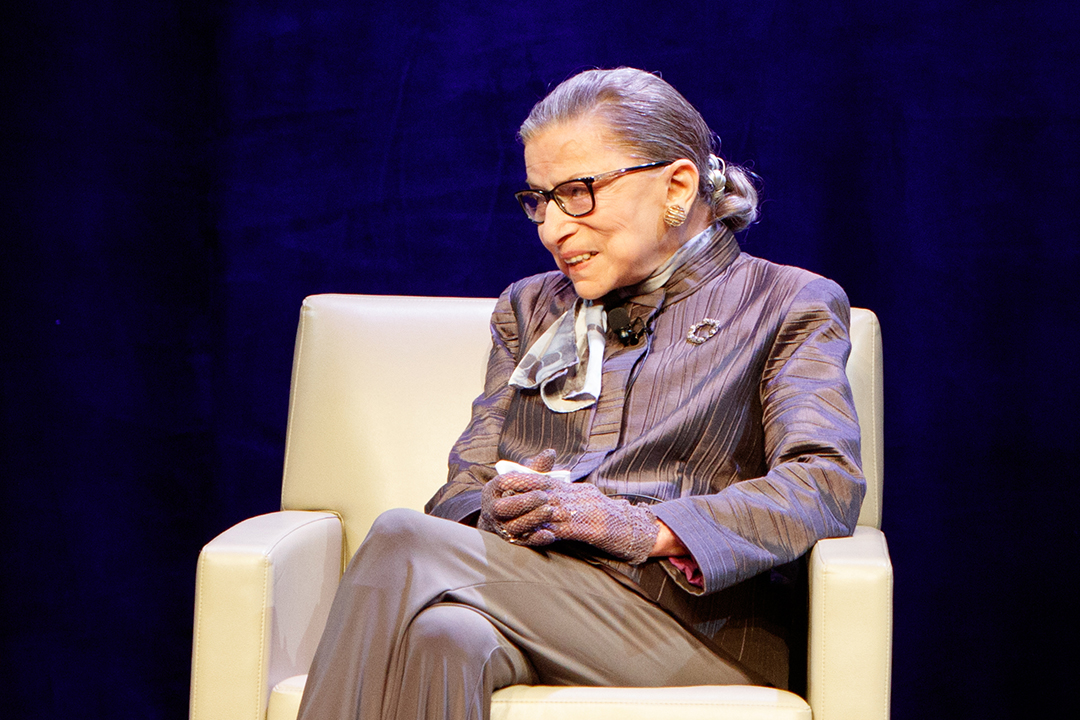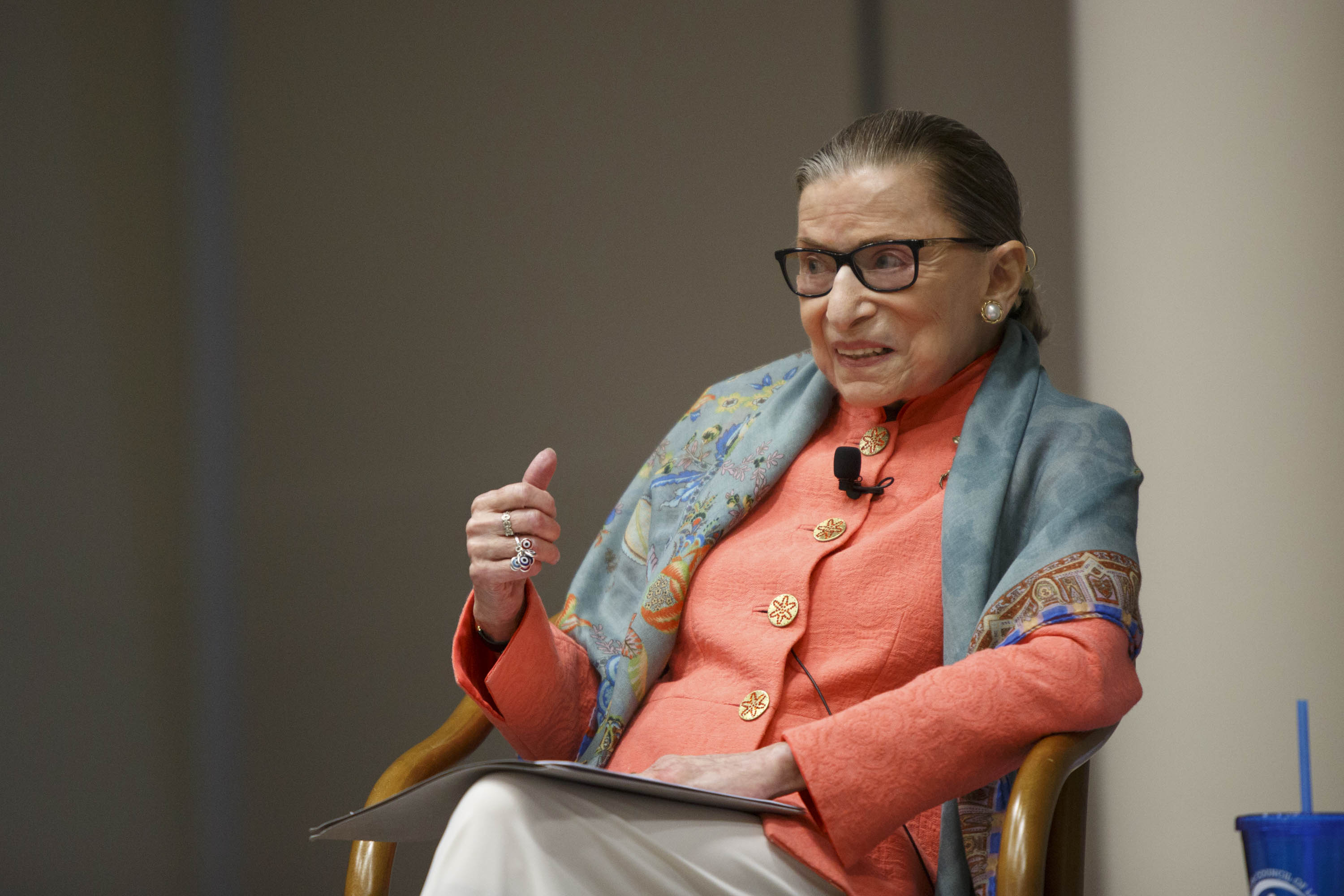U.S. Supreme Court Justice Ruth Bader Ginsburg, who in recent years served as the most senior member of the court’s liberal wing, died Friday due to complications of metastatic pancreas cancer. She was 87.
Justice Ginsburg, who was the second woman to serve on the nation’s highest court, was appointed in 1993 by President Bill Clinton. A pioneering advocate for women’s rights in the 1970s, she served 27 years on the Supreme Court and eventually solidified herself as a legal, feminist and cultural icon.
(Read GW Law Dean Dayna Bowen Matthew's statement on the death of Justice Ginsburg.)
Paul Schiff Berman, GW Law’s Walter S. Cox Professor of Law, clerked for Justice Ginsburg during the 1997-1998 Supreme Court term, and they remained in contact throughout the years.
He spoke with GW Today about her life, influence and legacy.
Q: What do you think is likely to be Justice Ginsburg’s legacy on the Supreme Court?
A: Justice Ginsburg is, of course, best known for the foundational work she did on behalf of gender equality, both as a lawyer in the 1970s and as a justice decades later. Her great accomplishment was to get nine male justices to understand that gender discrimination harms men, too, by making assumptions about gender roles. Several of the cases she brought before the Supreme Court in the ’70s were on behalf of male plaintiffs. The point was that everyone is harmed by discrimination, not just the group being explicitly disadvantaged. And now you would be hard-pressed to find anyone who would seek to resurrect the sorts of gender classifications and legal limitations placed on women in that era. She really helped move the culture.
In my own scholarly work, I have focused on some less well-known legacies of Ginsburg’s jurisprudence, particularly with regard to how legal systems interact with each other. In our federal system, state and federal law often overlaps, and the proper spheres for federal and state courts cannot easily be drawn. Justice Ginsburg was a leading proponent of various doctrines that would provide more space for federal courts to give greater deference to state courts. Likewise, she sought to gain wisdom from foreign and international court decisions that, while not binding on the Supreme Court, could nevertheless provide ideas and useful guidance.
Q: What are among the most important things you learned from working as her clerk?
A: In clerking at the U.S. Supreme Court for Justice Ginsburg, I witnessed her deep quietness and centeredness. She never spoke unless she had something to say. And when she did speak, her audience inevitably leaned in—both literally and figuratively—to hear the thoughts of someone speaking from her deepest self. She never allowed herself to be knocked off center or thrown off course by anger or frustration or despair. Instead, she always retained mental concentration and discipline and stayed focused on the task at hand and doing the best job possible with one’s eye on the horizon and the work that needs to be done. I have always tried to emulate that in my own life.
Q: What is the judicial decision for which Justice Ginsburg will be most remembered?
A: She is most famous for writing the nearly unanimous decision that required Virginia Military Institute to begin to admit women and that a separate, less rigorous military education proposed by the state was not a sufficient substitute. That case also made clear that any gender-based classifications in law require an exceedingly persuasive justification in order for them to be upheld.
Q: Can you share a story of your personal interactions with Justice Ginsburg?
A: Justice Ginsburg took an intense personal interest in the lives, careers and general welfare of her clerks. I remember when I was clerking for her, I began dating Laura Dickinson, now my wife (and also a GW Law professor), who was then a clerk for Justices Blackmun and Breyer. Somehow (I never found out how), Justice Ginsburg discovered this new relationship; she buzzed me on the intercom one day and with a twinkle in her voice said, “I didn’t know you had a special friend at the Court; you must have her up for tea.” Sure enough, the following week, Justice Ginsburg had tea with Laura and me. I remember she had a tablecloth laid on the table in her office, with fine china and everything. Two years later, Justice Ginsburg officiated when Laura and I got married. And the last time I saw her in chambers she gave deeply felt advice to our teenage son, whom we brought along to meet her. She said he should not be too despondent about the current political environment because the symbol of the United States should not be the bald eagle; it should be the pendulum. She was encouraging him to take the long view, as she always did.
Q: It is rare that a Supreme Court justice becomes a part of popular culture. Justice Ginsburg did. Can you comment on that?
A: I think Justice Ginsburg really liked the pop culture fame she received later in life because it provided a way for her to connect to the younger generations, particularly the young girls in this country and around the world. Justice Ginsburg always went out of the way to name and acknowledge the women who came before her and who marked the path that she had travelled, women of the 19th and early 20th centuries who were the first lawyers, the first judges and so on. She saw herself as part of that lineage, and I think she very much hoped that she could pass on that lineage to young people.
During my clerkship year, I witnessed Justice Ginsburg meeting with a group of Girl Scouts. One young girl asked her, “Did you always want to be a Supreme Court Justice?” Justice Ginsburg gave a twinkly smile and explained that when she was young the idea that she could even aspire to be a lawyer was a far-fetched notion. She was deeply gratified that those Girl Scouts could now plausibly envision themselves in such positions, an extraordinary societal shift that occurred within her lifetime and in large part because of legal changes she brought about as both a lawyer and a judge.
Q: How would you summarize Justice Ginsburg's constitutional philosophy?
A: I think first and foremost she really took seriously the aspirational ideal of “We the People.” As her law clerk, I heard her refer many times to those stirring words from the Preamble to the Constitution, only to follow the reference with the observation that “We the People” when it was written only in fact included a small subset of the population because Blacks and women, among others, were excluded.
To Justice Ginsburg, “We the People” should always be our North Star, the glowing beacon we use to measure our progress toward a more perfect union. She knew, as both a woman and a Jew, how imperfect our constitutional order was and continues to be, and she strove over her entire career to make sure “We the People” included as many as possible, and that those people were guaranteed equal treatment under the law.
“We the People” is an evolving concept, as Justice Ginsburg knew well. The phrase hides hundreds of years of discrimination and a continued history of often violent inequality that continues to this day. To honor Justice Ginsburg’s legacy, we must not only celebrate all that she accomplished, but also understand the enormity of the task ahead: avoiding a cataclysmic rupture of the country by using every available means to rescue our democracy from the rule of an increasingly tyrannical and intransigent minority of the country.
Take a look at some of Justice Ginsburg's visits to GW over the years:


